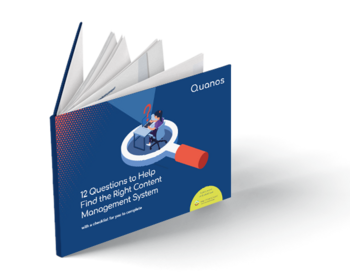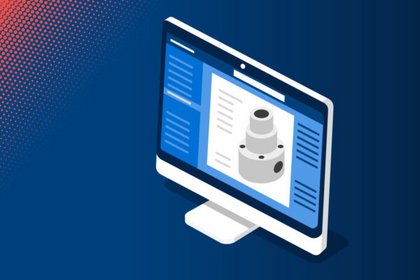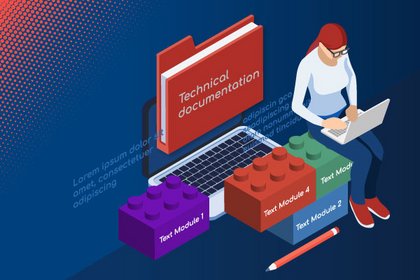The major advantages of a component content management system in technical writing
Authoring processes can be optimised with a content management system, because such a tool provides efficient solutions for different application areas. Every technical writer benefits from the advantages of working with such a content management system, regardless of the fact that the exact situation will differ from company to company. We have summarised the main advantages for you below:

Media-neutral data management
Media-neutral data management means that you can easily output content that you manage in CMS in different file formats. A modern, XML-based component content management system such as SCHEMA ST4 stores the content in XML format (so not bound to a specific output format) and accesses this neutral data when creating any file format. Only then does the system create the target formats, which could be a PDF for the print catalogue, HTML for the website, or Word or other file types. You therefore don’t need to manage content separately for each format, but instead you can conveniently manage it all in one place on the system. This is called single-source publishing: all outputs are generated from one source.
Reusing content
Once you have created content, you will of course want to use it in other projects and documents if possible. The “traditional” method for this is copy & paste; however, you will need to maintain and manage all the copied content in its various locations if something changes. Instead, in a content management system, you simply create a link to the existing content in your new project and reuse it. This not only works with whole chapters, but also with individual paragraphs, sentences, elements within sentences, images, tables, and so forth.
There are several advantages to this approach. On the one hand, it simplifies management of the content, as if a text or image needs to be updated, you only need to edit the original node. The update is automatically applied to all places where a link to the original node has been created by reusing content. This also ensures that no relevant place is accidentally overlooked. On the other hand, reusing content results in greater consistency among the documents. This is why your readers also benefit from the resulting recognition effect.
Managing variants and translations efficiently
Product variants have many similarities, but also striking differences, from the product name and product image through to technical data and features. It therefore makes perfect sense to reuse the same content for the common product characteristics in the associated documents. To take into account the differences, you can use the variant management options offered by a CCMS. Variables, metadata-classified resources and filtering mechanisms ensure flexibility, which allows you to centrally manage created content and use it again and again, but ensures that the individual variant data is automatically integrated at the relevant points.
And even when it comes to translating documents, you can reduce workload and expenses. Previously translated content is also reused and adopted for product variants. Only new texts must be provided for translation, which saves you the unnecessary duplication of translated content. The integrated translation management tool recognises what is new text and what has already been translated. You can export and import the corresponding data with a few mouse clicks via its TMS interface.
Clearly designed documents at the touch of a button
Naturally the final result should reflect your corporate design and be consistent with the document type. In the content management system, you determine the appearance of your documents via layouts that you can flexibly adapt to your requirements. Where traditional Office files often have been time consuming to format, the content management system always gives you a clear, professional document according to your layout specifications. These specifications guarantee a standardised, uniform appearance and the workload for design processing is greatly reduced.
Support throughout the entire process
SCHEMA ST4 integrates various mechanisms to help you create your documents, right from the beginning of the authoring process to the end. For example:
- Templates for your standardised content can be created directly in the system and form a framework for specific projects.
- An import interface also enables content from existing documents (e.g. Word, FrameMaker or InDesign) to be transferred to the CMS in a structured way.
- Authoring guidelines can be made available directly in the system so that you always have this information at your fingertips.
- With integrated QA tools, you ensure that specifications are adhered to.
- The release process and versioning ensure that you always have an overview of the current editing status and at the same time have access to previous versions.
- The editing and release process can be defined by explicit workflow control if required. This ensures that more complex administrative steps are also reliably executed.
As you can see, the use of a content management system ensures that duplicated work – and thus duplicated costs – are avoided. You edit content in one place, rather than in many different directories. And because everything in the system works in harmony, you create consistent documents in various formats. Single source technical writing – everyone wins!
White Paper: 12 Questions to Help Find the Right Content Management System

Software manufacturers give interested parties many opportunities to get to know their content management systems, such as webinars or live demos. But which aspects deserve your special attention? And which issues are worth specific probing? We have put together twelve of the most important questions you should ask providers when you are choosing your new content management system.
At the end of this white paper, you will also find a checklist to complete, which will act as a useful guide in your discussions with providers.


